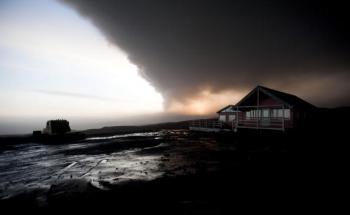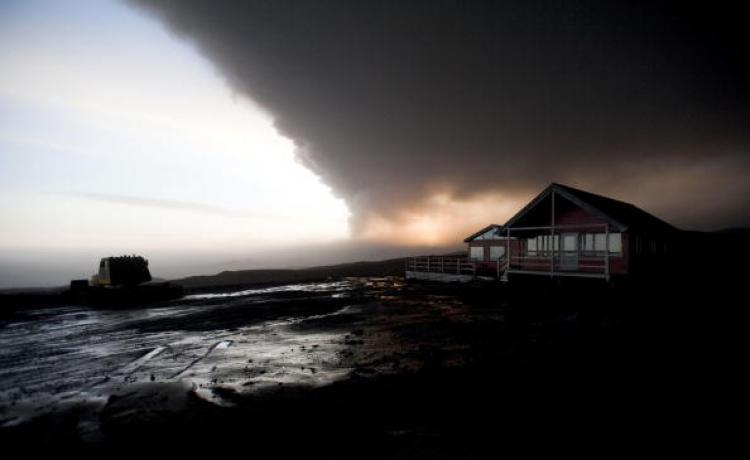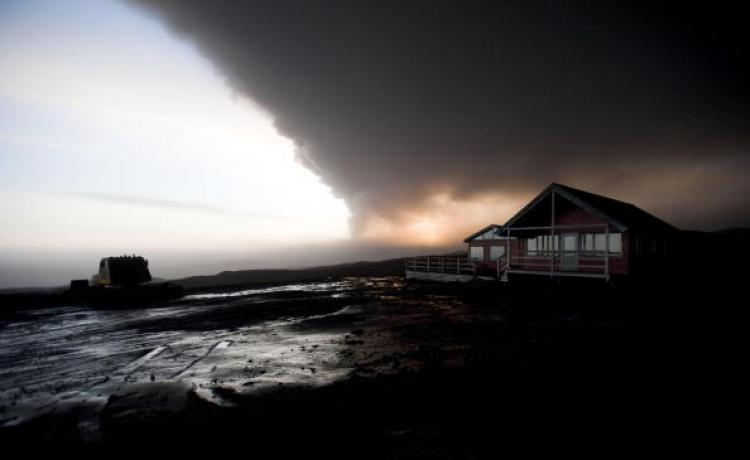The eruption of Eyjafjallajökull volcano in Iceland may have subsided, together with the associated travel chaos, but scientists continue to warn that more eruptions are likely in the future.
The current volcanic activity in Iceland is not unusual, with similar eruptions occurring on average every 20 to 40 years, says a recent report by the newly formed University College London (UCL) Institute for Risk and Disaster Reduction.
Over the last 1,100 years, there have been 205 volcanic eruptions in Iceland; about 150 of them were significantly explosive, according to the report. The last eruption to produce significant ash fall across northern Europe was in 1947.
Four of the most active volcanoes – Askja, Katla, Grimsvötn, and Hekla – and Öraefajökull, have produced 20 eruptions larger than Eyjafjallajökull in historic times.
Looking at the pattern of eruptions, scientists say they follow a cycle, and we could now be in a more active time period following a 50 to 80-year lull.
“The most likely explanation for the observed pattern is long-term stress conditions in the Icelandic crust and changes therein,” explained Dr Thor Thordarson, a volcanologist at Edinburgh University. “Seems like the region goes through periods where the stress distribution is relatively relaxed; hence it is easier for magma to rise towards the surface and erupt.”
Rumblings of the 2010 Eyjafjallajökull eruption began back in December 2009, when the Icelandic Met Office detected small earthquakes (magnitude 1–3) beneath the volcano; molten lava began pouring from a fissure in its side in March.
The explosive phase of the eruption began on April 14th. The huge ash cloud that spewed from the summit, reaching a height of about 11 kilometres (33,000 feet) on the first day of the eruption, was the result of hot molten rock meeting cold meltwater from the 70 to 200-metre thick glacier that caps the volcano.
The ash particles were particularly fine, noted scientists, making it easily carried on the wind. But the Eyjafjallajökull eruption was not particularly violent.
“The summit eruption at the Eyjafjallajökull volcano is ranked as a small to medium size eruption within the size scheme of historical explosive eruption in Iceland,” said Thordarson.
No one is sure how long the current eruption will last, but at least, for now, the explosive phase seems to be over. A June 1st status report from the Icelandic Meteorological Office and Institute of Earth Sciences says small earthquakes continue to be detected under the volcano, but mainly steam, rather than ash is being produced.
Eyjafjallajökull previously erupted in AD 920, 1612 and 1821, when it lasted 14 months, and had three explosive phases, according to the UCL report.
“Based on the historic eruption of 1821–23 it is possible we could see another explosive phase before the end of this eruption,” said Professor Peter Sammonds, Director of the UCL Institute for Risk and Disaster Reduction.
The eruption was a problem for air travel in the UK and Europe because of a north to northwesterly wind blowing the ash towards Europe. “Though such conditions are atypical, they are not considered to be particularly unusual,” write the authors of the UCL report, which estimates this direction of airflow will occur about 6 per cent of the time.
Just 15 miles to the east of Eyjafjallajökull is the larger and more active volcano Katla. Katla has erupted over 20 times in the past 1,000 years, with the last big one in 1918. Some scientists have noted that Katla has erupted shortly after previous Eyjafjallajökull eruptions, sparking fears that a Katla eruption could be imminent.
“Eruptions of Katla are so frequent the coincidence of eruptions could just be two volcanic cycles being in phase. However, there is a strong possibility of an eruption of Katla in the near future, because of its high frequency of eruptions,” explained Sammonds.
Gillian Foulger, professor of geophysics at Durham University, believes there is no coincidence that both have erupted together in the past as they are so close together geographically. “One could argue it’s the same huge system,” she said. But she stressed that doesn’t mean there is a 100 per cent certainty Katla will erupt soon.
Presently there are no signs that Katla will erupt, although the Icelandic Prime Minister speaking on BBC’s Newsnight on April 19th said that his country had been preparing for some time. “The time for Katla to erupt is coming close … It is high time for European governments and airline authorities all over Europe and the world to start planning for the eventual Katla eruption,” he said.
But Sammonds says a Katla eruption might not be so catastrophic. “Katla is a bigger volcano; however, the evidence suggests the magma intrusion under Katla over the last few years is relatively small, so there is no reason to suppose the next eruption of Katla is likely to be larger than the Eyjafjallajökull eruption.”
Dr Dave McGarvie, a volcanologist with The Open University, says based on historical eruptions there could be two scenarios: “The small 1955 [Katla] eruption stayed wholly within the ice and all it did was melt a lot of ice, cause a flood, and produced a deep depression in the surface of the glacier above the eruption site.
“However, if we had an eruption of the same magnitude as the 1918 eruption, then this has the potential to be a more ‘disruptive’ eruption for western Europe, because as well as producing ash in the lower atmosphere [like Eyjafjallajökull], it will also send substantial quantities of ash into the stratosphere ... where commercial airliners cruise.
“On the plus side, when Katla erupted in 1918 the eruption only lasted 24 days.”
Scientists have found evidence of ash reaching the UK in Scottish peat bogs going back thousands of years. The damage that volcanic ash can cause to aircraft engines has also been recognised since the boom in air travel in the 1970s. “[Yet] the potential threat from Icelandic eruptions – both in relation to impact on the aviation industry and to human health – is not included in the UK National Risk Register, established in 2008 to point-up likely threats to the nation,” write the report’s authors.
“The response to the ash cloud’s arrival in the UK and adjacent airspace was entirely reactive and therefore less effective than it could have been,” they conclude.
Professor Bill McGuire, Director of the Aon Benfield UCL Hazard Research Centre, said in a press release that “serious failings remain in relation to raising awareness of natural hazards capable of regional or global impacts. In this context, I again urge action in light of the principal recommendation of the UK Government’s 2005 Natural Hazards Working Group, vis a vis the establishment of an international science panel to catalogue, evaluate, and raise awareness of, natural hazards with the potential to affect more than one nation.”
Volcanoes in Italy, the Aegean, the Azores, and the Canary Islands, which also produce large ash plumes, are noted in the UCL report as having the potential to disrupt air travel in the future, though it is stated that it is very difficult to predict if and when future eruptions may occur.





